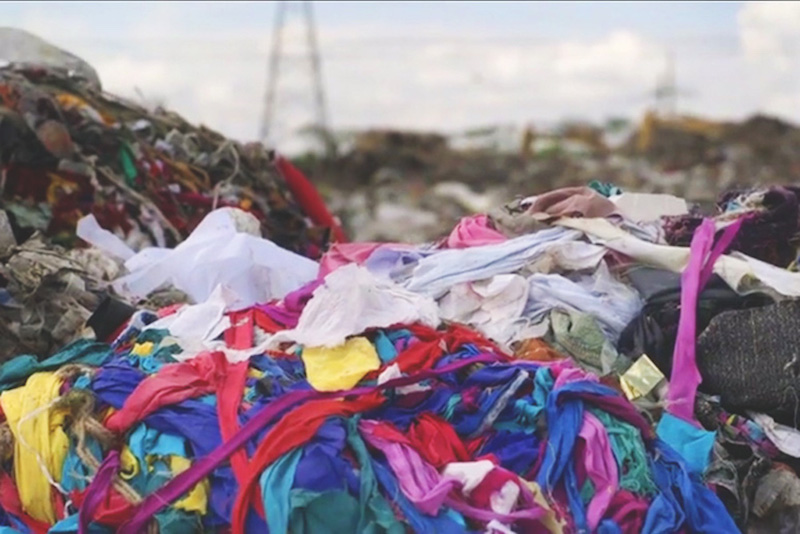In Conversation: Dhawal Mane On The Future Of Sustainable Fashion In India

The apparel manufacturing industry has been named the second dirtiest industry in the world after oil. Fashion’s ecological footprint is large, beginning with the volumes of water and pesticides used in cotton farming, and continuing into the garment’s afterlife - as piles of used clothing that end up in landfills, leaching chemicals into the environment. But, there's no doubt the fashion industry is changing. With technology at the forefront and design innovation taking centre stage, the focus on clean, sustainable fashion is sharper than it’s ever been before.
Dhawal Mane
We caught up with Dhawal Mane. Of the several hats he wears, Dhawal works to weave sustainability into the curriculum of fashion schools in India. He works full time with a clothing retailer to implement their sustainability strategy in India and Sri Lanka. He also helps organise Sustainability Drinks Bangalore - a bi-monthly event that connects environmental professionals in the city.
Mane (28) was recently the recipient of the global 30 Under 30 awards conferred by GreenBiz, a leading resource for sustainable business news. The award recognises young individuals across the world who are shaping the next generation of sustainable business. He believes that fashion can be a force for good, and is the only Indian to have received the honour for his contribution to cleaning up the business of fashion.
Wastewater from textile units is often heavily laced with chemicals after dyeing and finishing processes. Source
What makes the textile and fashion industry particularly dirty?
The textile industry is inherently water intensive. About 60-80 litres of water are used to produce a kilogram of dyed cotton fabric. Wastewater from textile units is often heavily laced with chemicals after the dyeing and finishing processes. Examples exist from the textile belts of Tirupur & Rajasthan which have left environmental catastrophes, such as dry rivers, in their wake. Indian regulations mandate an Effluent Treatment Plant (ETP) to treat water before it’s discharged into water bodies downstream but small textile units in the unorganised sector skirt these regulations, leading to water pollution by hazardous chemicals.
Industry-led programs such as Zero Discharge of Hazardous Chemicals, Sustainable Water Resources (SWAR) and Higg Index by the Sustainable Apparel Coalition have made considerable progress with Indian manufacturers to phase out hazardous chemicals, reduce water consumption in production and improve environmental sustainability of factories overall. Besides, the Indian regulation of Zero Liquid Discharge (ZLD) places our textile processing units ahead in terms of infrastructure as compared to those in other developing countries. Another issue is that cotton agriculture is pesticide intensive. In fact, conventional cotton uses 16 percent of the world’s insecticides and 7 percent of its pesticides while organic cotton accounts for a minuscule 0.5 percent of the entire cotton produced worldwide.
"Conventional cotton uses 16 percent of the world’s insecticides and 7 percent of its pesticides and organic cotton accounts for a minuscule 0.5 percent of the entire cotton produced worldwide."
Textile waste and discarded clothes today end up in landfills. In the United Stated, of the 16 million tonnes of textile waste generated, 84 percent is either burnt or landfilled. Discarded textile waste is a problem because technologies to efficiently recycle clothing in a closed loop, which is recycling clothing back into clothing, are being scaled up as we speak. Another problem is the use of synthetic virgin fibres such as polyester which are non-biodegradable and use petroleum as a raw material. Pollution from the microfibres from polyester garments is a newly discovered source of ocean pollution. Fabric blends such as poly-cotton pose a problem, too, because they are difficult to separate into their constituent materials and recycle. These challenges are being tackled by the industry head-on. Circularity in fashion is picking up pace worldwide. For instance, the methodology for creating fashion products that align with circular economy principles has been made open source through the Good Fashion Guide for any brand to follow.
Textiles aren’t biodegradable, which means they sit in landfills for at least 200 years, sending toxic chemicals into the air and soil. Source
How well are we doing in sustainable fashion fashion in India at the moment? Should our focus change?
Currently, the understanding of sustainability in Indian fashion is limited to handlooms. Don’t get me wrong, handlooms are great in terms of having a positive impact on artisan livelihoods and being energy-light. But, India is not just a textile producing country, it’s fast becoming a consuming country and more and more of us are wearing mass manufactured clothes. Realistically, if 1.3 billion Indians decide to wear handlooms, we may not be able to produce or afford so many. We must also examine the mass manufacturing aspect of textiles, where much work for environmental and social improvement through better design, improved materials, safer manufacturing conditions, reuse of discarded clothing, and textile waste recycling is taking place.
Would you say the Indian consumer is becoming more open to the idea of sustainable fashion?
The moment consumers begin getting more information about their clothes, they will begin demanding clothes that are responsibly made and the industry will be forced to respond. Once sustainably manufactured clothing becomes more affordable and widely accessible, it will go from being aspirational to ubiquitous.
Less than 1 percent of the material used to produce clothing is recycled into new clothing. Image: Flickr CC/ Epsos.de
Does having a focus on sustainability hinder growth in the fashion business?
No. It’s become a necessity today. We are at a point where being sustainable makes a business case, acts as a differentiator and promotes growth in the right manner, rather than hindering it. For example, the Madras High Court mandate to shut down textile mills without ETPs and water recycling systems is a good example. If those factories cannot function, the brands relying on them for fabrics face a delay in getting products to store shelves, and the whole supply cycle gets disrupted. Similarly, a drought can affect the quantity and price of cotton supply. So, sustainability is right up there as a priority today; it’s so ingrained in the fashion business with ramifications everywhere. It’s just that the links between the fashion industry and the environment and the impacts of one on the other must be understood more clearly.
What trends are you looking forward to in apparel manufacturing and fashion in the next decade?
I look forward to Indian designers exploring different kinds of material: recycled polyester, organic cotton, biodegradable cellulosic fibres that use less water in the production phase and are as comfortable as cotton. Sustainable fashion will no longer be a niche segment. What I foresee is brands will become a lot more transparent about the environmental and social parameters of clothing - their impact on environment and livelihoods, how the garment was made, where the materials come from. This information will be as easily available as nutritional information on food products. There is also a huge potential for the circular economy in fashion. India is already a hub for garments recycling. More entrepreneurs must look at recycling - remanufacturing of old clothes or setting up repair shops in an organised manner - from a business point of view, so that recycling gains pace. We will also need more efforts to make the mass manufacturing sector sustainable.
Indian designers are innovating with natural fabrics that have a smaller carbon footprint. Image: Facebook/ The Pot Plant
What recommendations do you have for consumers looking to shop responsible fashion?
As consumers, we must learn to look beyond generic sustainability claims like 'ethical', 'eco-friendly' and 'green' which can often lean towards greenwashing, and instead ask questions about the garments we buy such as: What material are they made of?, Where were they manufactured?, Where and how was the cotton grown?, Is it durable?, Is it a fad or a classic?
It’s also important to know certain basic facts about fabrics and choose a good mix of them for our wardrobes. For instance, polyester has a higher impact due to its origins in petroleum, but it can be light on water and energy consumption while we use it. Cotton has its origins in nature, however it needs frequent washing and ironing during its use. We need to expand our understanding of what is sustainable and what is not to clothing’s entire life cycle. So choosing a mix of materials (cotton, handloom and synthetics) based on our use is a good way to go.
Many international fashion brands are increasingly becoming more transparent about their manufacturing and designing practices and even about the volume of pollution they are responsible for, hence giving consumers the power to choose fair. Consumers should do their research to pick responsible brands. We could also look at choosing fabrics and having our garments locally tailored. Reuse of old fabrics has traditionally been part of Indian culture; I remember used saris being turned into blankets in my house. Going back to such practices will help cut down textile waste.
Many international fashion brands are increasingly becoming more transparent about their manufacturing and designing practices. Flickr CC/ Jason Hargrove
It is beleived that the next generation of designers will steer fashion in an environment-friendly direction. How optimistic are you about that?
Throughout my education, as a student of textile technology and fashion, sustainability was absent from the curriculum. Including it in the curriculum is a way of making that option available to students who might be interested in pursuing it because research and innovation in textiles is the need of the hour. My hope is that sustainability becomes a subject in all schools and colleges, and everyone graduates armed with a deep knowledge of it. In India, mass protests and activism can be starting points to get the dialogue about sustainable fashion going, but to leapfrog progress, we need people to identify the gaps, work on solutions, and take it up at a professional or institutional level. We need to see a lot more research and innovation specific to the Indian context and solutions tailored to our demographic.
Dhawal will be delivering a stand-alone course on sustainable fashion at the JD Institute of Fashion Technology, Bangalore in early 2018. Connect with him here for details.
Maya is a social researcher by training. Her writing has appeared in Scroll, YourStory and The Alternative. She is the Founder of Eartha and tweets @Maya_Kilpadi.











